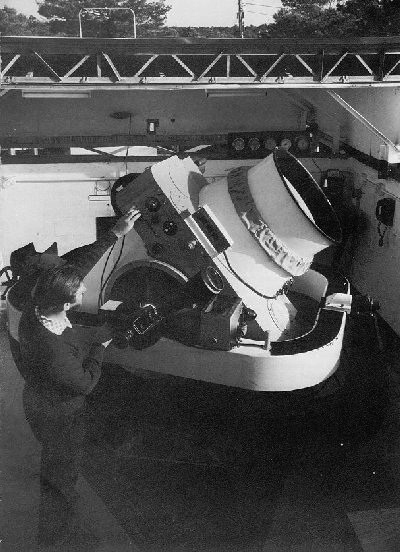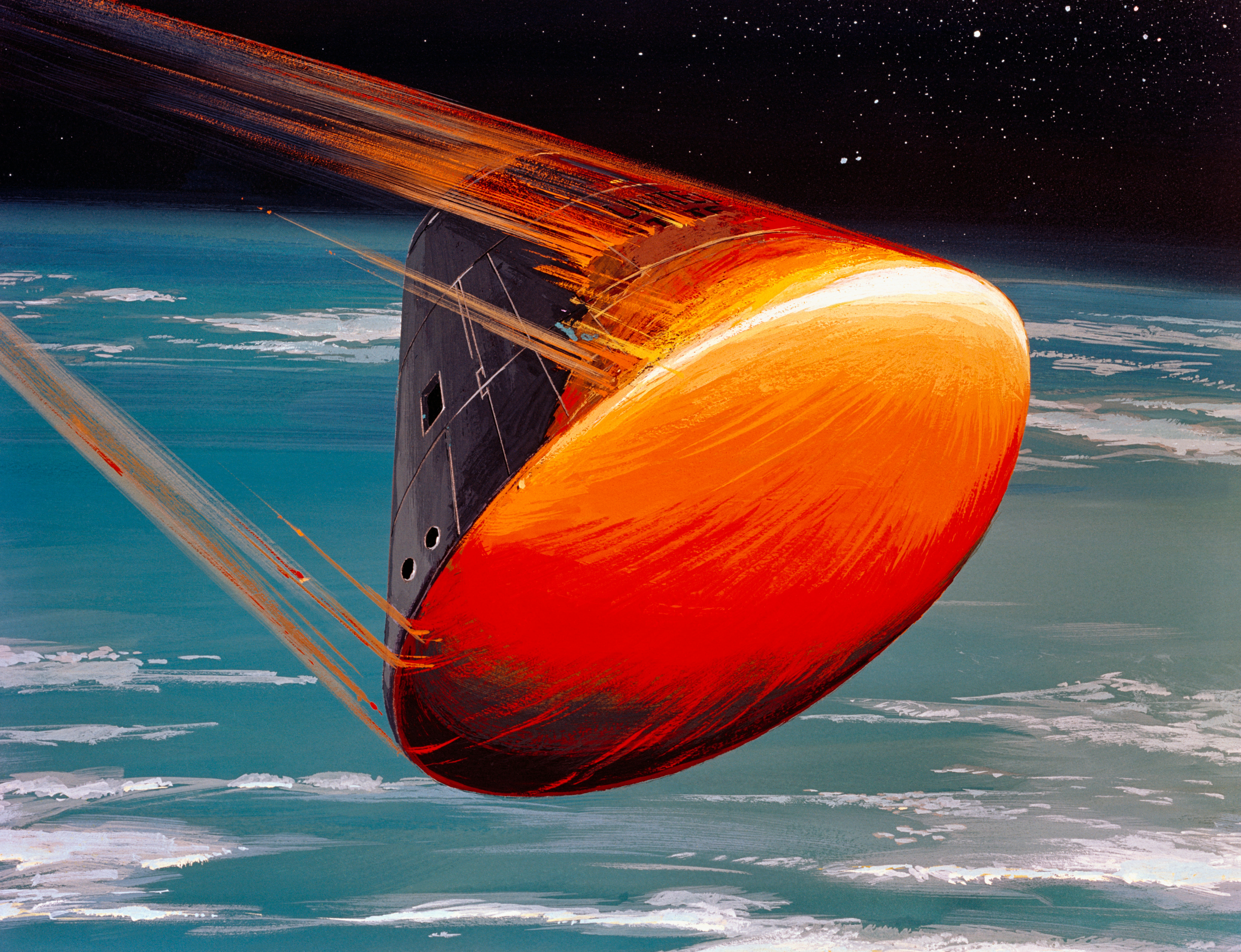|
Kessler Syndrome
The Kessler syndrome, also known as the Kessler effect, collisional cascading, or ablation cascade, is a scenario proposed by NASA scientists Donald J. Kessler and Burton G. Cour-Palais in 1978. It describes a situation in which the density of objects in low Earth orbit (LEO) becomes so high due to space pollution that collisions between these objects cascade, exponentially increasing the amount of space debris over time. This proliferation of debris poses significant risks to satellites, space missions, and the International Space Station, potentially rendering certain orbital regions unusable and threatening the sustainability of space activities for many generations. In 2009, Kessler wrote that modeling results indicated the debris environment had already become unstable, meaning that efforts to achieve a growth-free small debris environment by eliminating past debris sources would likely fail because fragments from future collisions would accumulate faster than atmospheric d ... [...More Info...] [...Related Items...] OR: [Wikipedia] [Google] [Baidu] |
Space Object Catalog
The United States Space Surveillance Network (SSN) detects, tracks, catalogs and identifies artificial objects orbiting Earth, e.g. active/inactive satellites, spent rocket bodies, or fragmentation debris. The system is the responsibility of United States Space Command and operated by the United States Space Force and its functions are: * Predict when and where a decaying space object will re-enter the Earth's atmosphere; * Prevent a returning space object, which to radar looks like a missile, from triggering a false alarm in missile-attack warning sensors of the U.S. and other countries; * Chart the present position of space objects and plot their anticipated orbital paths; * Detect new artificial objects in space; * Correctly map objects traveling in Earth orbit; * Produce a running catalog of artificial space objects; * Determine ownership of a re-entering space object; * The Space Surveillance Network includes dedicated, collateral, and contributing electro-optical, pas ... [...More Info...] [...Related Items...] OR: [Wikipedia] [Google] [Baidu] |
FY-1C
Fēngyún (FY, ) are China's meteorological satellites. Launched since 1988 into polar Sun-synchronous and geosynchronous orbit, each three-axis stabilized Fengyun satellite is built by the Shanghai Academy of Spaceflight Technology ( SAST) and operated by the China Meteorological Administration ( CMA). To date, China has launched twenty-one Fengyun satellites in four classes (FY-1 through FY-4). Fengyun 1 and Fengyun 3 satellites are in polar, Sun-synchronous orbit and Low Earth orbit while Fengyun 2 and 4 are geosynchronous orbit. On 11 January 2007, China destroyed one of these satellites (FY-1C, COSPAR 1999-025A) in a test of an anti-satellite missile. According to NASA, the intentional destruction of FY-1C created more than 3,000 high-velocity debris items, a larger amount of dangerous space debris than any other space mission in history. Classes Fengyun 1 The four satellites of the Fengyun 1 (or FY-1) class were China's first meteorological satellites placed in ... [...More Info...] [...Related Items...] OR: [Wikipedia] [Google] [Baidu] |
ASM-135 ASAT
The ASM-135 ASAT is an air-launched anti-satellite multistage missile that was developed by Ling-Temco-Vought's LTV Aerospace division. The ASM-135 was carried exclusively by United States Air Force (USAF) F-15 Eagle fighter aircraft. The program was cancelled in 1988. Development Starting in the late 1950s, the United States began development of anti-satellite weapons. The first US anti-satellite weapon was the Bold Orion Weapon System 199B (also the High Virgo missile, Weapon System 199C, attempted to conduct an ASAT test but failed to intercept its target; High Virgo's test was a few weeks before Bold Orion's). Like the ASM-135, the Bold Orion missile was air-launched, but in this case from a B-47 Stratojet. The Bold Orion was tested on 19 October 1959 against the Explorer 6 satellite.Edited By Bhupendra Jasani, ''Space Weapons and International Security'', A SIPRI Publication, Oxford University Press, 1987. The two-stage Bold Orion missile passed within of Explorer 6. ... [...More Info...] [...Related Items...] OR: [Wikipedia] [Google] [Baidu] |
Chain Reaction
A chain reaction is a sequence of reactions where a reactive product or by-product causes additional reactions to take place. In a chain reaction, positive feedback leads to a self-amplifying chain of events. Chain reactions are one way that systems which are not in thermodynamic equilibrium can release energy or increase entropy in order to reach a state of higher entropy. For example, a system may not be able to reach a lower energy state by releasing energy into the environment, because it is hindered or prevented in some way from taking the path that will result in the energy release. If a reaction results in a small energy release making way for more energy releases in an expanding chain, then the system will typically collapse explosively until much or all of the stored energy has been released. A macroscopic metaphor for chain reactions is thus a snowball causing a larger snowball until finally an avalanche results (" snowball effect"). This is a result of stored gravitati ... [...More Info...] [...Related Items...] OR: [Wikipedia] [Google] [Baidu] |
United States Air Force
The United States Air Force (USAF) is the Air force, air service branch of the United States Department of Defense. It is one of the six United States Armed Forces and one of the eight uniformed services of the United States. Tracing its origins to 1 August 1907, as a part of the United States Army Signal Corps, the USAF was established by transfer of personnel from the Army Air Forces with the enactment of the National Security Act of 1947. It is the second youngest branch of the United States Armed Forces and the fourth in United States order of precedence, order of precedence. The United States Air Force articulates its core missions as air supremacy, intelligence, surveillance, target acquisition, and reconnaissance, global integrated intelligence, surveillance and reconnaissance, airlift, rapid global mobility, Strategic bombing, global strike, and command and control. The United States Department of the Air Force, Department of the Air Force, which serves as the USAF's ... [...More Info...] [...Related Items...] OR: [Wikipedia] [Google] [Baidu] |
Delta (rocket Family)
The Delta rocket family was a versatile range of American rocket-powered expendable launch systems that provided space launch capability in the United States from 1960 to 2024. Japan also launched license-built derivatives ( N-I, N-II, and H-I) from 1975 to 1992. More than 300 Delta rockets were launched with a 95% success rate. The series was phased out in favor of the Vulcan Centaur, with the Delta IV Heavy rocket's last launch occurring on April 9, 2024. Origins The original Delta rockets used a modified version of the PGM-17 Thor, the first ballistic missile deployed by the United States Air Force (USAF), as their first stage. The Thor had been designed in the mid-1950s to reach Moscow from bases in Britain or similar allied nations, and the first wholly successful Thor launch had occurred in September 1957. Subsequent satellite and space probe flights soon followed, using a Thor first stage with several different upper stages. The fourth upper-stage combinatio ... [...More Info...] [...Related Items...] OR: [Wikipedia] [Google] [Baidu] |
Apollo Command/Service Module
The Apollo command and service module (CSM) was one of two principal components of the United States Apollo (spacecraft), Apollo spacecraft, used for the Apollo program, which landed astronauts on the Moon between 1969 and 1972. The CSM functioned as a mother ship, which carried a crew of three astronauts and the second Apollo spacecraft, the Apollo Lunar Module, to lunar orbit, and brought the astronauts back to Earth. It consisted of two parts: the conical command module, a cabin that housed the crew and carried equipment needed for atmospheric reentry and splashdown (spacecraft landing), splashdown; and the cylindrical service module which provided propulsion, electrical power and storage for various consumables required during a mission. An umbilical cable, umbilical connection transferred power and consumables between the two modules. Just before reentry of the command module on the return home, the umbilical connection was severed and the service module was cast off and al ... [...More Info...] [...Related Items...] OR: [Wikipedia] [Google] [Baidu] |
Skylab
Skylab was the United States' first space station, launched by NASA, occupied for about 24 weeks between May 1973 and February 1974. It was operated by three trios of astronaut crews: Skylab 2, Skylab 3, and Skylab 4. Skylab was constructed from a repurposed Saturn V third stage (the S-IVB), and took the place of the stage during launch. Operations included an orbital workshop, a solar observatory, Earth observation and hundreds of experiments. Skylab's orbit eventually decayed and it disintegrated in the atmosphere on July 11, 1979, scattering debris across the Indian Ocean and Western Australia. Overview Skylab was the only space station operated exclusively by the United States. A permanent station was planned starting in 1988, but its funding was canceled and U.S. participation shifted to the International Space Station in 1993. Skylab had a mass of with a Apollo command and service module (CSM) attached and included a workshop, a solar observatory, and sever ... [...More Info...] [...Related Items...] OR: [Wikipedia] [Google] [Baidu] |
Baker-Nunn Camera
A Schmidt camera, also referred to as the Schmidt telescope, is a catadioptric Astrophotography, astrophotographic Optical telescope, telescope designed to provide wide Field of view, fields of view with limited Aberration in optical systems, aberrations. The design was invented by Bernhard Schmidt in 1930. Some notable examples are the Samuel Oschin telescope (formerly Palomar Schmidt), the UK Schmidt Telescope and the ESO Schmidt; these provided the major source of all-sky photographic imaging from 1950 until 2000, when electronic detectors took over. A recent example is the Kepler space telescope exoplanet finder. Other related designs are the Wright camera and Lurie–Houghton telescope. Invention and design The Schmidt camera was invented by Estonian-German optician Bernhard Schmidt in 1930. Its optical components are an easy-to-make Sphere, spherical primary mirror, and an aspherical correcting Lens (optics), lens, known as a #Schmidt corrector plate, Schmidt corrector pl ... [...More Info...] [...Related Items...] OR: [Wikipedia] [Google] [Baidu] |
Popular Science
Popular science (also called pop-science or popsci) is an interpretation of science intended for a general audience. While science journalism focuses on recent scientific developments, popular science is more broad ranging. It may be written by professional science journalists or by scientists themselves. It is presented in many forms, including books, film and television documentaries, magazine articles, and web pages. History Before the modern specialization and professionalization of science, there was often little distinction between "science" and "popular science", and works intended to share scientific knowledge with a general reader existed as far back as Greek and Roman antiquity. Without these popular works, much of the scientific knowledge of the era might have been lost. For example, none of the original works of the Greek astronomer Eudoxus (4th century BC) have survived, but his contributions were largely preserved due to the didactic poem '' Phenomena'' writte ... [...More Info...] [...Related Items...] OR: [Wikipedia] [Google] [Baidu] |
Atmosphere Of Earth
The atmosphere of Earth is composed of a layer of gas mixture that surrounds the Earth's planetary surface (both lands and oceans), known collectively as air, with variable quantities of suspended aerosols and particulates (which create weather features such as clouds and hazes), all retained by gravity of Earth, Earth's gravity. The atmosphere serves as a protective buffer between the Earth's surface and outer space, shields the surface from most meteoroids and ultraviolet solar irradiance, solar radiation, keeps it warm and reduces diurnal temperature variation (temperature extremes between daytime, day and night) through heat retention (greenhouse effect), redistributes heat and moisture among different regions via air currents, and provides the atmospheric chemistry, chemical and climate conditions allowing life to exist and evolution, evolve on Earth. By mole fraction (i.e., by quantity of molecules), dry air contains 78.08% nitrogen, 20.95% oxygen, 0.93% argon, 0.04% carbon ... [...More Info...] [...Related Items...] OR: [Wikipedia] [Google] [Baidu] |







